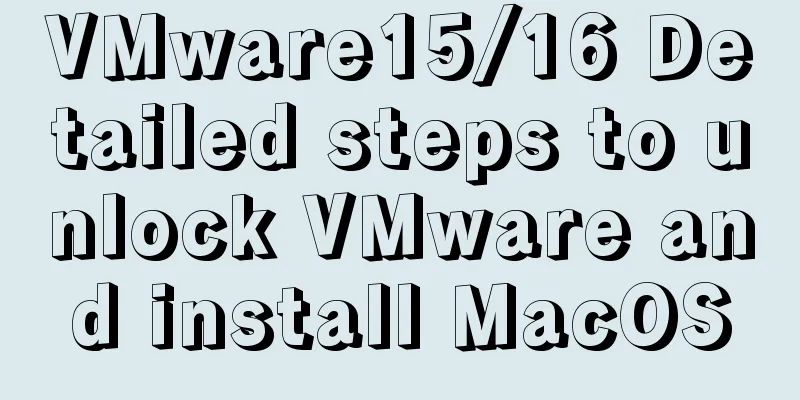Use node-media-server to build a simple streaming media server

|
Record some of the processes of using node-media-server. The environment of this article is Windows. This article is suitable for beginners. Things used: Here are some points (please point out if there are any mistakes): Node-media-server is a streaming media server. You can think of it as a transit station, which is used to convert the stream format or perform some operations on the video stream and push the stream address outward. ffmpeg is used as a streaming tool to push the video or video stream you need to convert to the streaming media server. Pulling stream means pulling the video stream from the streaming server, and viewers watch it by pulling the stream address published by the streaming server. When you play it with a video player, you are pulling the stream. Installnode-media-server is developed based on node.Js, so you need to install it using npm first. npm install node-media-server Writing and running node-media-serverCreate a new app.js. And write the following code, then run app.js
const NodeMediaServer = require('node-media-server');
const config = {
rtmp:
port: 1935,
chunk_size: 60000,
gop_cache: true,
ping: 60,
ping_timeout: 30
},
http: {
port: 8000,
allow_origin: '*',
}
};
var nms = new NodeMediaServer(config)
nms.run();
You can access the localhost:8000/admin address to access the node-media-server management interface. The screenshots are as follows:
Use FFmpeg command to push the address.Push video files When executing the following code, you need to start node-media-server. ffmpeg -re -i ./video.mp4 -c copy -f flv rtmp://localhost:1935/live/STREAM_NAME The above command will generate two stream addresses after passing through node-media-server. A type of rtmp. A flv. The former can be played on a computer, and the latter can be played on both a mobile phone and a computer. The rtmp address is the command address in FFmpeg The flv address is: http://localhost:8000/live/STREAM_NAME.flv Push rtsp streamTo push rtsp (camera video stream), just change the above ./video.mp4. During the test, the blogger found that pushing rtsp streams would either result in a green screen or packet loss, especially when combined with hls, the packet loss rate was even higher, so it is not recommended to use commands to push rtsp streams. Convert hls stream formatOne thing to note when converting hls stream is that you need to specify the mediaroot parameter. Although the default value is set inside node-media-server, it is still recommended to set it once. Then use the following configuration.
const NodeMediaServer = require('node-media-server');
const ff = require('ffmpeg');
const config = {
rtmp:
port: 1935,
chunk_size: 60000,
gop_cache: true,
ping: 60,
ping_timeout: 30
},
http: {
port: 8979,
mediaroot: './media/', // It is recommended to write allow_origin: '*',
},
trans: { // The parameter here is the trans parameter, not the relay parameter. The hls configuration in the relay parameter is invalid ffmpeg: './bin/ffmpeg.exe', //Specify the FFmpeg location tasks: [
{
app: 'live',
ac: 'acc',
vc: 'libx264',
hls: true,
hlsFlags: '[hls_time=2:hls_list_size=3:hls_flags=delete_segments]',
dash: true,
dashFlags: '[f=dash:window_size=3:extra_window_size=5]'
}
]
}
};
var nms = new NodeMediaServer(config)
nms.run();After starting the above code, use FFmpeg to push the stream. After a while, you will find that a live/STREAM_NAME folder is generated in the directory pointed to by mediaroot, which contains the m3u8 file. Since the m3u8 file needs to be generated first, there will be a relatively large delay if it is a streaming camera. The m3u8 address is: http://localhost:8000/live/STREAM_NAME/index.m3u8 If you find problems with m3u8 playback, try removing the ac and vc parameters. The OP did not use these two parameters in actual use. Use code to stream rtspFor some users, it may be necessary to push the rtsp camera video stream for cross-end preview. The blogger recommends using this method. This method does not require the use of cmd to execute FFmpeg commands, and the blogger has tested the delay to be 3s (intranet, because there is no external network address, the external network is not very clear). Less delay. The code is as follows:
const NodeMediaServer = require('node-media-server');
const config = {
rtmp:
port: 1935,
chunk_size: 60000,
gop_cache: true,
ping: 60,
ping_timeout: 30
},
http: {
port: 8979,
mediaroot: './media/',
allow_origin: '*',
},
relay: {
ffmpeg: './bin/ffmpeg.exe',
tasks:
{
app: 'live',
mode: 'static',
edge: 'rtsp://admin:****@192.168.4.167:554/Streaming/Channels/101', //rtsp
name: 'technology',
rtsp_transport : 'tcp', //['udp', 'tcp', 'udp_multicast', 'http']
}
]
},
};
var nms = new NodeMediaServer(config)
nms.run();
This method can generate two video streams, one rtmp and one flv. SummarizeBecause the blogger built a streaming media server mainly for the project to transfer the camera stream, but the JAVA colleagues had dealt with it before and found that it would consume a lot of hardware resources. However, the blogger did not find how much resources were consumed when using node-media-server, so it still needs specific testing. Moreover, for camera streaming, in order to avoid unnecessary performance consumption, the OP intends to let the server start the streaming media switching function (using code to switch the rtsp stream) only when the observer initiates the preview. When the observer closes the preview, the streaming media function is immediately turned off. This avoids unnecessary consumption of performance. After all, it can be operated directly through code, which is more convenient and can also reduce a certain amount of pressure on the server. This is the end of this article about using node-media-server to build a simple streaming media server. For more information about using node-media-server to build a streaming media server, please search for previous articles on 123WORDPRESS.COM or continue to browse the following related articles. I hope you will support 123WORDPRESS.COM in the future! You may also be interested in:
|
<<: Detailed explanation of crontab scheduled execution command under Linux
>>: How to add fields to a large data table in MySQL
Recommend
How to change apt-get source in Ubuntu 18.04
When using apt-get to install, it will be very sl...
React Native JSI implements sample code for RN and native communication
Table of contents What is JSI What is different a...
js to achieve simple calendar effect
This article shares the specific code of js to ac...
A brief introduction to VUE uni-app basic components
1. scroll-view When using vertical scrolling, you...
9 Practical Tips for Creating Web Content Pages
Content 1. Give readers a reason to stay. Make the...
Solve the problem of Access denied for user 'root'@'%' to database 'xxx' after creating a database in MySQL
Preface I recently encountered a problem at work....
A simple example of MySQL joint table query
MySql uses joined table queries, which may be dif...
HeidiSQL tool to export and import MySQL data
Sometimes, in order to facilitate the export and ...
The meaning and usage of linux cd
What does linux cd mean? In Linux, cd means chang...
Let me teach you how to use font icons in CSS
First of all, what is a font icon? On the surface...
MySQL Database Iron Laws (Summary)
Good database specifications help reduce the comp...
Summary of JavaScript's setTimeout() usage
Table of contents 1. Introduction 2. The differen...
How to use axios request in Vue project
Table of contents 1. Installation 2. There is no ...
JavaScript navigator.userAgent obtains browser information case explanation
The browser is probably the most familiar tool fo...
Use simple jQuery + CSS to create a custom a tag title tooltip
Introduction Use simple jQuery+CSS to create a cus...










